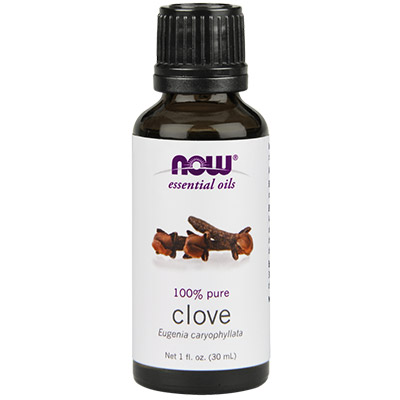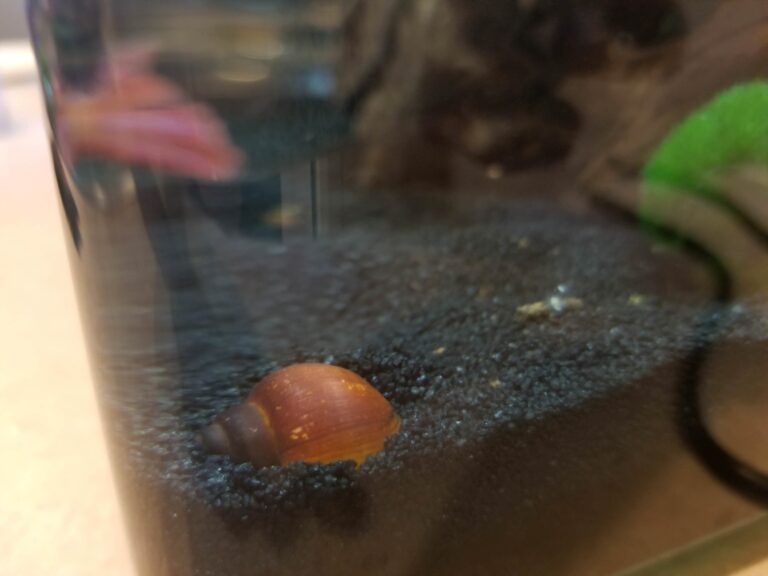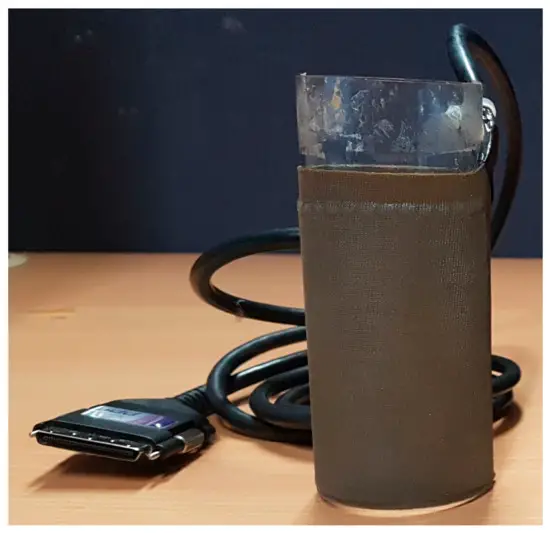How to Lower Nitrates in Fish Tank Naturally?
Nitrates in a fish tank can be lowered naturally by having live plants. Live plants will absorb nitrates as well as other nutrients from the water and use them to grow, thus helping to keep levels down.
Regular partial water changes should be done using dechlorinated tap or reverse osmosis (RO) water.
This removes some of the existing nitrate burden and provides clean fresh water for your fish.
A good quality filter that is regularly maintained helps remove debris from the aquarium which reduces organic matter build-up, another source of excess nitrates.
Feeding your fish sparingly with high-quality food also helps reduce nutrient input into the tank which would otherwise result in increased levels of nitrate production.
Perform a water change: The most commonly recommended action for reducing nitrate levels in your fish tank is to perform a partial water change.
A 25-30% water exchange should be done every two weeks to keep nitrates at acceptable levels.
Add aquarium plants: Aquarium plants are excellent at utilizing the nitrogen compounds, such as nitrates, in the aquarium environment and removing them from the tank’s ecosystem.
Adding fast-growing species like hornwort or anacharis can help reduce nitrate levels quickly and naturally while providing shelter and shade for your fish.
Use live rock: Live rock, which is often used in saltwater tanks, also works well to absorb excess nutrients including nitrates when used in freshwater tanks too!
It will not only reduce concentrations of unwanted substances but it also provides natural hiding places for your aquatic inhabitants as well as adding aesthetic value to your aquarium setup.
Utilize snails or shrimp: Snails, shrimp and other bottom feeders are great additions if you’re looking for an organic way to lower nitrate levels.
Because they consume leftover food scraps that would otherwise break down into nitrogenous compounds like ammonia.
And eventually turn into more toxic forms such as nitrites then ultimately lead to higher concentrations of Nitrates
Chemical to Reduce Nitrates in Aquarium
Aquarium enthusiasts can use chemical treatments such as potassium permanganate, sodium nitrate, or ferric chloride to reduce the amount of nitrates in their aquariums.
These chemicals are typically added directly to the water and act to absorb any excess nitrates in the system.
It’s important to note that these chemicals should be used as a last resort, since they can potentially introduce other harmful substances into your tank if not used properly.
Regular water changes and improved filtration practices should always be prioritized over chemical treatments when it comes to reducing nitrates in an aquarium environment.
How to Lower Nitrates in Freshwater Fish Tank?
Lowering nitrates in a freshwater fish tank is important for maintaining a healthy environment for your fish.
Nitrate levels should be kept below 40 ppm, and can be reduced through regular water changes using dechlorinated tap water and by vacuuming the substrate to remove any built-up waste.
The addition of live plants will help absorb nitrates from the water and introduce oxygen into the tank which aids with filtration.
You can use a chemical filter media such as zeolite or activated carbon to reduce nitrate levels even further.
How to Reduce Nitrates in Aquarium Fast?
One of the most effective ways to reduce nitrates in an aquarium is through regular water changes.
Doing partial water changes every two weeks can help reduce nitrate levels, as it helps remove some of the built-up waste that contributes to high nitrates.
Making sure your filter media is clean and free from debris will go a long way towards reducing nitrate levels in your tank.
Signs of High Nitrates in Aquarium
High levels of nitrates in an aquarium can be very harmful to fish and other aquatic life.
Signs of high nitrates include a widespread algal bloom, discolored water, cloudy eyes, rapid gill movement, excessive shedding of scales or slime coatings on the fish’s body, loss of appetite and lethargy.
If you suspect your tank is suffering from high nitrate levels it is important to test the water regularly and take steps to reduce the level as quickly as possible.
How to Lower Nitrates Without Water Change?
Water changes are one of the most important methods for controlling nitrate levels, but there are several other ways to lower them without a water change.
This can include increasing surface agitation and oxygenation, adding live plants or macro-algae, avoiding overfeeding and using an appropriate filter with adequate media.
Regular maintenance of your aquarium such as vacuuming substrate to remove food particles and debris that can cause nitrates to rise is also recommended.
What Causes High Nitrates in Fish Tank?
High nitrates in a fish tank can cause stress and illness to the inhabitants, so it is important to keep them at an acceptable level.
Nitrates occur naturally as part of the nitrogen cycle, but they can also build up from overfeeding or when there is too much organic matter present in the tank.
Poor maintenance such as infrequent water changes or faulty filtration systems can contribute to elevated levels of nitrates.
Keeping on top of regular water changes and appropriate feeding habits can ensure that your aquarium remains healthy and free from high nitrate levels.
Safe Nitrate Levels in Aquarium
When it comes to maintaining a healthy aquarium, nitrate levels are an important factor to consider.
Nitrates are naturally produced by fish waste and can be toxic at high levels.
In order to keep your fish safe, it is recommended that the nitrate level in your aquarium should stay below 20ppm (parts per million).
Regular water changes and using a filtration system can help maintain low and safe nitrate levels for your tank inhabitants.
How to Lower Nitrates in Saltwater Fish Tank?
One of the best ways to lower nitrates in a saltwater fish tank is through regular water changes.
This helps remove excess nutrients that can cause nitrate levels to increase.
Using activated carbon or chemical filtration media can help absorb nitrates from the water column.
Adding live plants and aerating will also help reduce nitrate levels by increasing oxygen content and providing source of nutrient uptake for bacteria and other organisms.

Credit: www.algone.com
What Can I Put in My Tank to Lower Nitrates?
There are a variety of ways you can lower nitrates in your tank. One option is to add beneficial bacteria to the water.
This type of bacteria will help break down organic matter and reduce nitrate levels naturally.
Adding live plants to your aquarium helps remove excess nutrients from the water, including nitrogen compounds like nitrates.
You can also use chemical additives such as zeolite or denitrifying filter media which absorb toxins from the water column.
Make sure you’re performing regular maintenance on your tank such as cleaning filters and gravel vacuuming debris off the substrate regularly.
These activities will help keep nutrient levels low and maintain healthy parameters for all aquatic life in your tank!
What is a Home Remedy for Nitrates in Fish Tank?
A home remedy for nitrates in a fish tank is to ensure that the tank water is clean and free of debris.
Regularly cleaning the gravel, replacing lost water with fresh dechlorinated water and vacuuming up any visible detritus from the bottom can help reduce nitrate levels in your aquarium.
Adding live plants to your aquarium can be beneficial as they take up some of the excess nitrates in the environment.
Live plants also provide shade and hiding spots for fish which can help reduce stress and disease in your aquatic friends.
Also, consider performing regular partial water changes (10-25% every 3-4 weeks) to keep nitrate levels low without shocking your tank’s inhabitants or risking an ammonia spike due to overcleanliness.
Using chemical filtration media such as activated carbon may help remove some of these unwanted compounds from the environment, although it should not be relied upon entirely as a solution for high nitrate levels.
What Naturally Removes Nitrates from Water?
One of the most common ways to remove nitrates from water is through natural denitrification.
Denitrification is a process where bacteria found in soils convert nitrate into harmless nitrogen gas, which can then be released safely into the atmosphere.
This process requires an environment with little oxygen present and plenty of organic material for the bacteria to consume as fuel.
To create this environment, one must introduce anaerobic (oxygen-free) conditions, such as by adding wood chips or sawdust to shallow aquifers or by flooding fields and wetlands that provide adequate organic matter for the bacteria’s metabolism.
Introducing aerobic conditions via aeration tanks can also help reduce nitrate levels in water sources, either directly or indirectly through promoting denitrification processes elsewhere within a watershed system.
Physical separation of sediments containing high concentrations of nitrates from other parts of a river system may also assist in reducing their presence in water sources downstream.
How Do You Get Rid of Nitrates Without Water Change?
Nitrates are a common problem in fish tanks and can lead to poor water conditions if not addressed.
There are several ways to get rid of nitrates without doing a water change.
The most effective way is by using anaerobic bacteria which consume nitrates while living in the substrate or filter material.
This method is often referred to as denitrification and can be done with special products called denitrifying filters or media that contain beneficial bacteria for this purpose.
Increasing the number of live plants in your tank will help absorb some of the nitrate levels as they grow, acting as natural filters for your tank’s ecosystem.
You can also try adding zeolite stones which act like sponges and trap excess nitrogen from the water column before it has time to break down into toxic forms like ammonia or nitrites.
These should be replaced regularly once full though!
Conclusion
Lowering nitrates in a fish tank is an important part of maintaining a healthy environment for your fish.
By following these natural methods, you can help keep your aquarium’s water clean and free from excess nitrogen levels.
Not only will this keep the inhabitants safe and healthy, but it will also make the tank look more beautiful.
With some simple steps such as regular water changes, adding live plants to provide oxygenation.
And using beneficial bacteria supplements to promote biological filtration, you can easily lower nitrate levels in your fish tank naturally!






